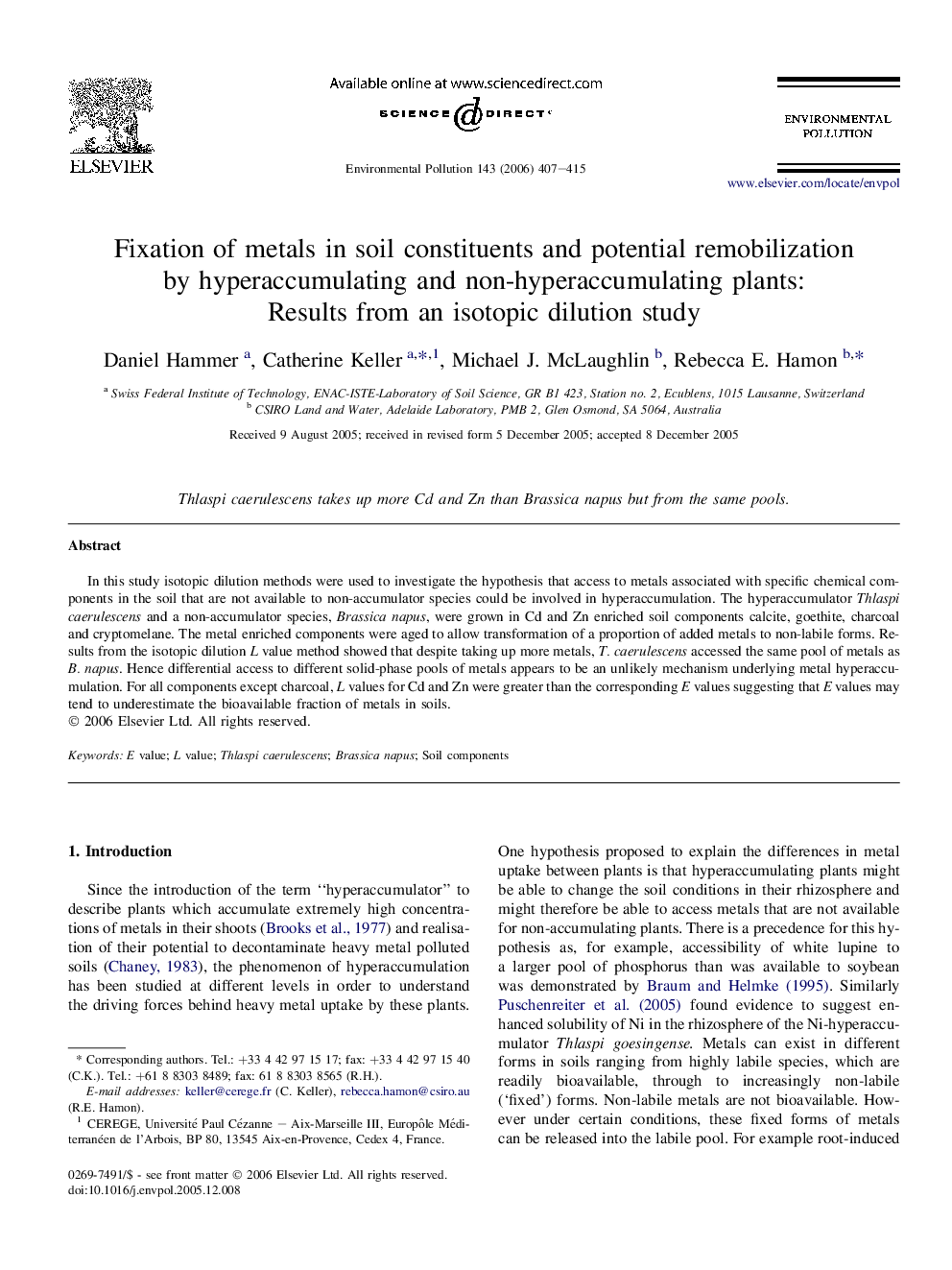| Article ID | Journal | Published Year | Pages | File Type |
|---|---|---|---|---|
| 4427695 | Environmental Pollution | 2006 | 9 Pages |
Abstract
In this study isotopic dilution methods were used to investigate the hypothesis that access to metals associated with specific chemical components in the soil that are not available to non-accumulator species could be involved in hyperaccumulation. The hyperaccumulator Thlaspi caerulescens and a non-accumulator species, Brassica napus, were grown in Cd and Zn enriched soil components calcite, goethite, charcoal and cryptomelane. The metal enriched components were aged to allow transformation of a proportion of added metals to non-labile forms. Results from the isotopic dilution L value method showed that despite taking up more metals, T. caerulescens accessed the same pool of metals as B. napus. Hence differential access to different solid-phase pools of metals appears to be an unlikely mechanism underlying metal hyperaccumulation. For all components except charcoal, L values for Cd and Zn were greater than the corresponding E values suggesting that E values may tend to underestimate the bioavailable fraction of metals in soils.
Related Topics
Life Sciences
Environmental Science
Environmental Chemistry
Authors
Daniel Hammer, Catherine Keller, Michael J. McLaughlin, Rebecca E. Hamon,
